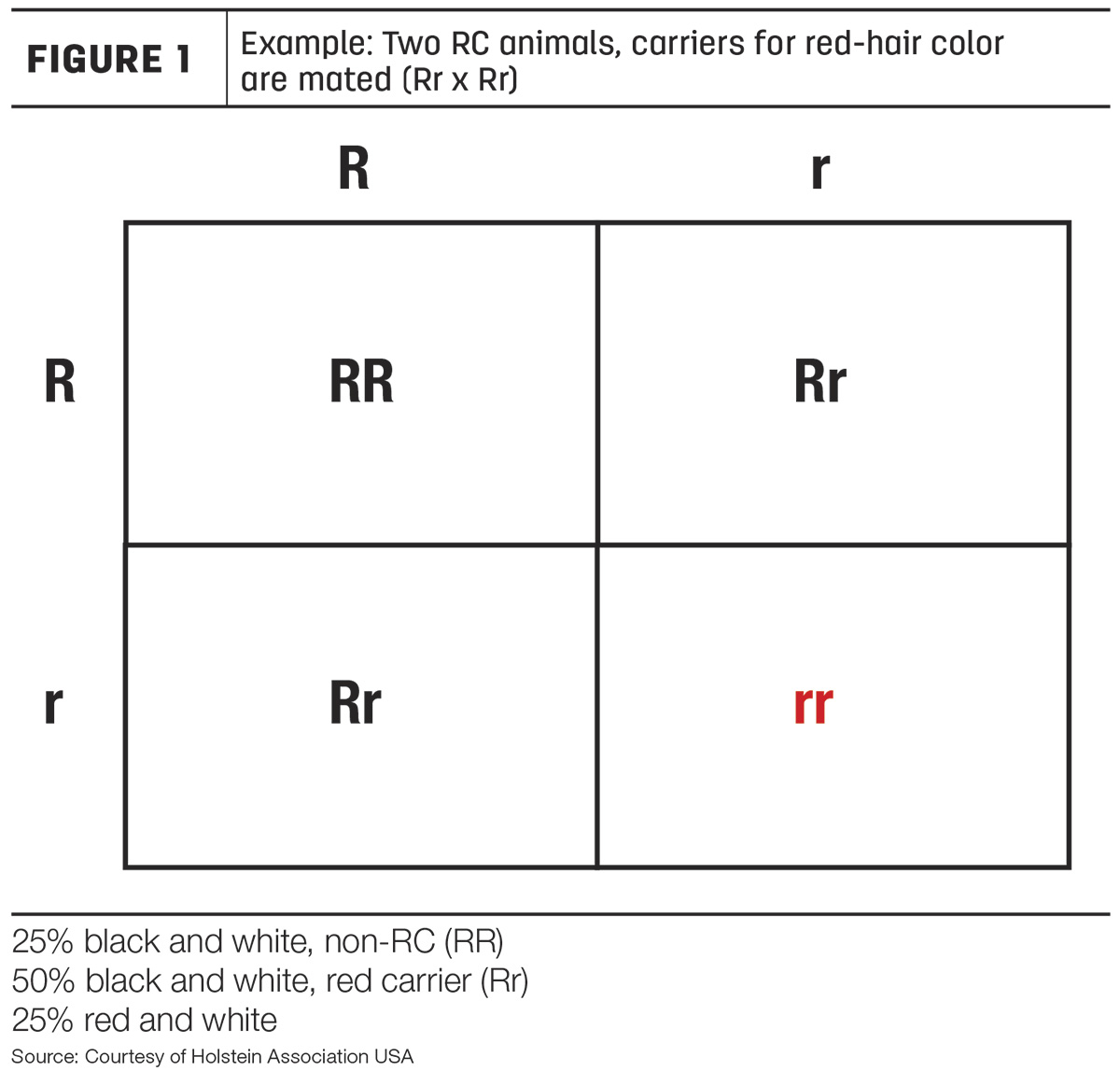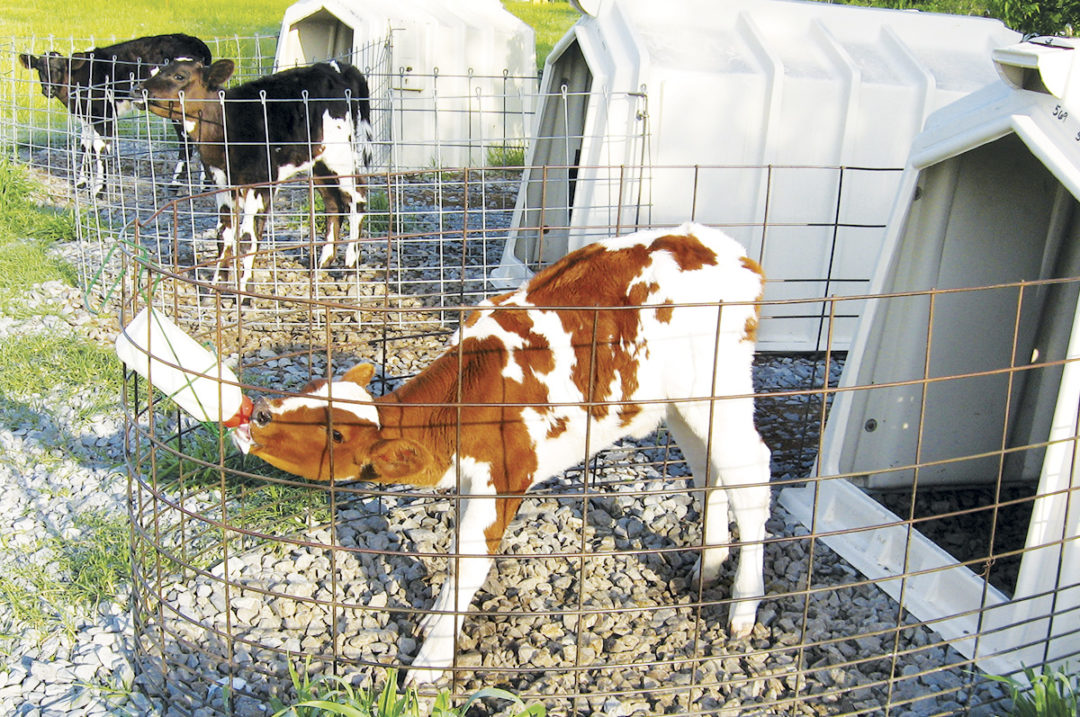Though the genetic condition has had several different names, (such as Holstein muscle weakness and calf recumbency) Holstein Association USA (HAUSA) announced it will recognize early onset muscle weakness syndrome (MW) as an official genetic condition effective February 2024. Here is an overview of the causes and consequences of MW.
What is MW?
To understand this defect, let’s jump back to sixth-grade science class and review a few terms.
- Deoxyribonucleic acid (DNA): DNA is a molecule that serves as the genetic material in nearly all of your cells.
- Haplotype: This is a continuous segment of DNA that is inherited intact from parent to offspring.
- Chromosome: A large strand of DNA that contains many genes – cattle have 31 unique chromosomes but have duplicates of each chromosome in each cell – one copy from each parent.
- Gene: A gene is a segment of DNA that has a function within your cells. Usually, a gene may produce a protein that can help the cell perform chemical reactions.
- Allele: An allele is a different version of a gene that was caused by genetic mutations and can produce different versions of proteins when compared to the original gene.
- Homozygous: This is when an individual has two copies of the same allele on both chromosome copies.
- Heterozygous: This is when an individual has two different alleles of the same gene. In this case, one allele was inherited from one parent, and a different allele was inherited from the other.
- Recessive: This is an allele that is only known to have an effect when it is inherited from both parents (homozygous).
MW is the result of a mutated haplotype from both sire and dam being expressed. This haplotype is recessive, so both parents must contain the mutated haplotype for a calf to obtain MW, which has a 25% chance of expression. See Figure 1 for an example with coat color.

Timeline
In 2022, several producers from multiple states contacted Penn State with questions regarding a phenomenon they were seeing in calves. The inability to stand and overall muscle weakness in these animals posed a concern, and research was published in the November 2022 issue of the Journal of Dairy Science Communications with the conclusion that an incomplete penetrant haplotype identified on chromosome 16 is a possible cause.
In April of 2023, the Council on Dairy Cattle Breeding (CDCB), HAUSA and National Association of Animal Breeders (NAAB) released a statement regarding the defect – defining the industry position, reporting testing being done by both Penn State and the USDA Animal Genetics and Improvement Laboratory (USDA-AGIL) to determine heredity, encouraging producers to report any abnormalities in calves and defining the next steps for the industry.
USDA-AGIL went to work using and fine-tuning computing technology that helped researchers determine heredity for Holstein cholesterol deficiency (HCD). Two haplotypes were found: one normal and one mutated. This made tracing the source of the genetic condition more difficult and required improvements to the research technology used. The lab was able to determine the source of the mutated haplotype and trace carriers through generations.
In November 2023 HAUSA, CDCB and NAAB released a joint industry statement that December 2023 genetic evaluations would include a report determining if cattle were carriers, noncarriers, homozygous or probably homozygous of MW.
What does this mean for producers?
Resources are available for producers to test for MW. Determining the prevalence of the genetic condition in your herd can aid in management decisions and avoid costly matings. Animals carrying this gene do not need to be eliminated from the herd, but producers are encouraged to make conscious breeding and management decisions regarding MW. Note that there are instances in which homozygous carriers of MW do live to adulthood.
What's next?
“Making MW gene and haplotype test results publicly available will allow all parties to better evaluate and manage their breeding stock,” says Tom Lawlor, head geneticist at HAUSA. “As the MW carrier animals are less valuable than other animals of similar genetic merit, MW animals will appear less often on top breeding lists. Our overall goal is to lower the frequency of the MW defective allele and eventually eliminate it from the Holstein breed.”
Moving forward, HAUSA, CDCB, NAAB and USDA-AGIL encourage producers to report any abnormalities observed. This aids in discovering a potential genetic condition, speeds up research and will ultimately aid in the genetic progression of national herds.








